The terror of the Australian outback

Horror movies derive much of their atmosphere and effectiveness from their locations. Imagine The Wicker Man in the garden of an English country house instead of an isolated Hebridean island. Or The Shining, if it had been set in a sunny hotel on Venice Beach rather than a snowed-in resort in the Rocky Mountains.
More like this:
– 10 films to watch this October
– How The Exorcist caused a US moral panic
– The rural films that haunt us
But no location has proved more effective at regularly scaring audiences over the last 50 years than that most remote of locales, the Australian outback.
Its isolation from civilisation looms large in the acclaimed new horror/thriller The Royal Hotel, from The Assistant director Kitty Green – just as it did in the documentary that inspired it, Pete Gleeson’s tense-as-hell fly-on-the-wall 2016 work Hotel Coolgardie.
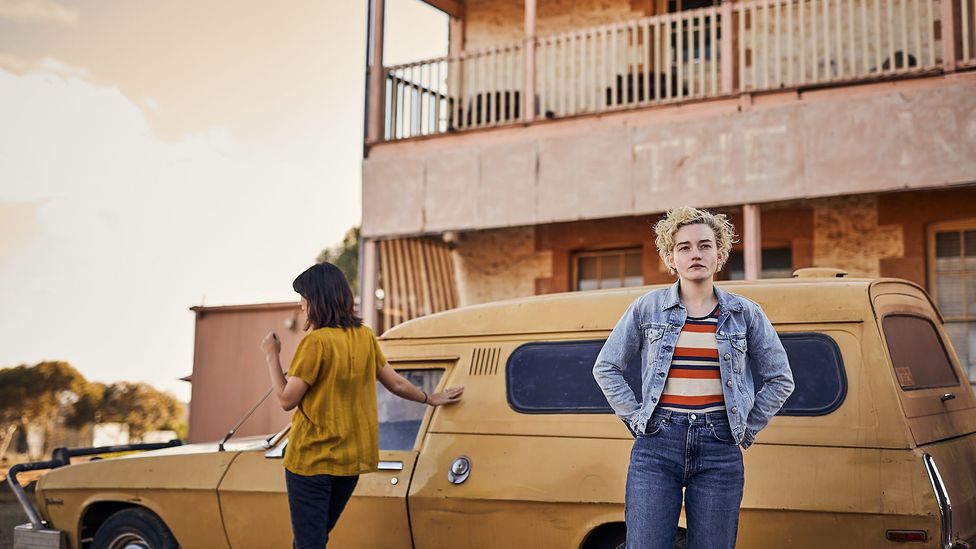
The Royal Hotel is inspired by a documentary that observed two female backpackers working in an outback bar (Credit: Universal)
In both films, a pair of tourists are down on their uppers and take temporary bar work in a small outback town that’s living off the fumes of the Australian mining boom.
There, they have to deal with boorish male locals, who don’t seem to realise how threatening their behaviour to the visitors is – it’s all just drunken banter to them until it gets out of hand. The potential for violence haunts Hotel Coolgardie – audiences know that the only person who could protect these women if a situation goes bad is the cameraman – but it comes to a head in The Royal Hotel. “Green sets her focus solely on how this violence, which can manifest physically, emotionally, and psychologically, affects the well-being of young women,” said critic Marya E Gates in her review of the film for RogerEbert.com.
With no transport of their own, the women are trapped with these men, and the impossibility of escape is what’s terrifying.
They could walk out. But where to? Into the empty and inhospitable outback. Which direction would you take when the landscape in every direction looks the same?
Where ‘outback horror’ all began
The Royal Hotel is part of a long Australian tradition of “outback horror”, even as Green has talked about setting out to subvert some of the genre’s tropes. Just over 50 years ago, it took two international directors to really show audiences the darker side of the Australian outback for the first time. Before 1971, it had been portrayed as relatively benign, the epitome of essential Australianness and the source of the national character – inhabited by happy-go-lucky bushrangers, capable and adaptable easy-going “diggers” – aka army veterans who lived and worked on the land – and loveable larrikin rogues with a healthy distaste for authority. The landscape lent itself to Australian-style westerns (1946’s The Overlanders), colonial histories (1949’s Eureka Stockade) or rural melodramas like The Sundowners (1960).
But in 1971, the outback ceased to be simply a location: it became a character in its own right.
Englishman Nicholas Roeg arrived in cinemas with Walkabout, which centred on two lost white children, left to die in the heart of the bush, the arid landscape utterly inconsistent with survival, until an Aboriginal youth turns up to guide them to safety.
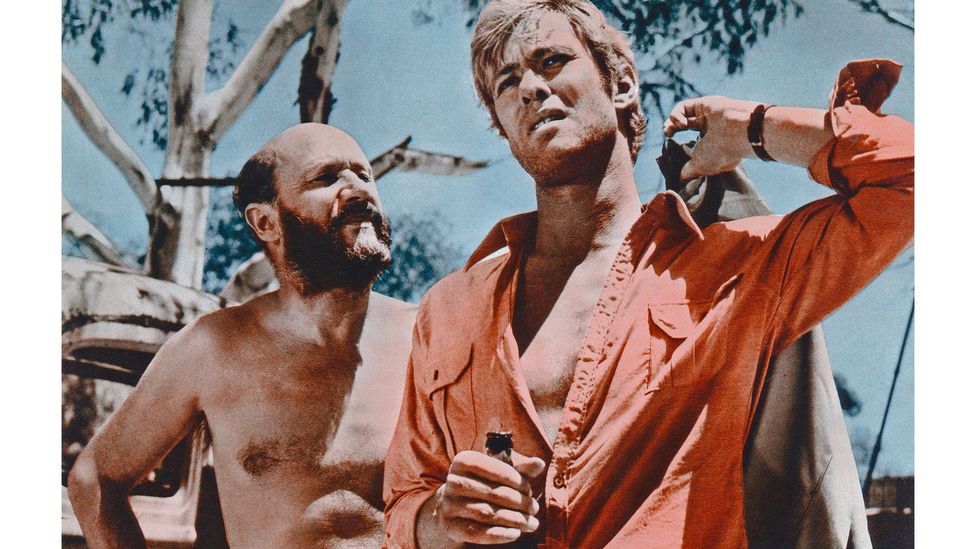
One of the inspirations for The Royal Hotel was cult 1971 thriller Wake in Fright (Credit: Getty Images)
There’s a lot more to Walkabout than that, of course, but it was notably the first film to portray the outback itself as hostile to life, to be treated with care, to be taken seriously
In the same year, cult psychological horror classic Wake in Fright (another inspiration for Green in making The Royal Hotel) saw Canadian director Ted Kotcheff – later to find fame with Stallone’s First Blood – strand a middle-class teacher in the fictional outback town of Bundanyabba.
When his strategy to gamble his way to the funds needed to pay off his debts fails spectacularly, John Grant (Gary Bond) quickly discovers that the locals are not friendly. His unwilling sojourn in “The Yabba” descends into a desperate nightmare of alcohol abuse and mental torment, as the remoteness of the town, the brutal landscape and the inhospitable people conspire to drive Grant mad.
Initially, at least, the film was not popular in Australia – box office and reviews were both disappointing – but its reputation has grown significantly since it was restored in 2009.
Nevertheless in the 1970s, the floodgates were opening. Young Australians began making films about – and not just in – Australia. A “New Wave”, they called it. And for several decades since then, outback Australia has been the canvas for many of those films – disturbing, unnerving, sometimes terrifying. Occasionally, just plain weird. A lot of them also fall under the banner of “Ozploitation” – referring to the out-there exploitation films that really peaked in Australia in the 1970s and 1980s.
One such Ozploitation movie was Peter Weir’s early comedy/horror The Cars That Ate Paris (1974). It told the bizarre and twisted story of an outback town whose townspeople deliberately cause fatal motor accidents in order to repurpose the vehicles into wild pre-punk (and pre-Mad Max) stylised four-wheeled creations.
Weir then followed that up in 1975 with the more quietly creepy Picnic at Hanging Rock (based on a 1967 novel), about the disappearance of a group of Victorian schoolgirls in which the outback landscape seemed to be the source of the unsolved mystery itself.
Since then, the Australian outback has been used countless times as a location for either horror, thriller or supernatural mystery stories – sometimes all three. So why does the outback continue to have such a hold over filmmakers?
A place of multiple threats
It starts with extremes, according to Jason Di Rosso, the film critic for Australia’s ABC network: “It’s all relative, but to non-indigenous Australians, and perhaps more so to non-Australians, it’s viewed as a location of extreme heat, extreme distances, extreme isolation, so it’s not surprising when filmmakers create characters who are either overwhelmed by it, like in Walkabout, or who become somehow perverted and embittered by it, like many of the townspeople in Wake in Fright, or worse.”
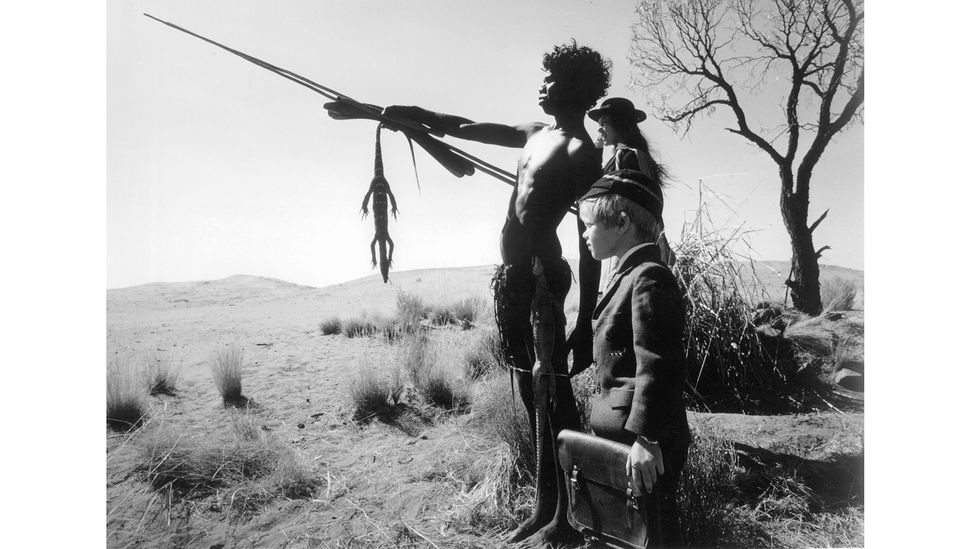
Nicolas Roeg’s Walkabout (1971) saw two children stranded in the outback – and highlighted the landscape’s brutality (Credit: Getty Images)
New Zealand Filmmaker and commentator Doug Dillaman has a theory: “Survival is a fundamental goal of a horror narrative and the outback itself provides challenges to survival galore. Isolation from civilisation and its comforts and norms, heat, lack of water, all challenge any visitors. Add to that epic distances and indistinguishable landscapes and surviving on its own is terrifying.”
There is also a variety of “outback horror” that has focused on the threat to backpackers specifically, from The Royal Hotel to 1981’s Road Games, starring scream queen Jamie Lee Curtis as a US traveller kidnapped by a serial killer, and Greg McLean’s 2005 slasher Wolf Creek, where a man tries to murder three travellers whose car breaks down on a remote road in northern Western Australia. The latter had a chilling real-life inspiration – the case of Ivan Milat, who between 1989 and 1993 murdered seven backpackers in rural New South Wales.
So, there are often two things trying to get you in the outback – the land and the people. But sometimes the natural world comes after you, too.
In Russell Mulcahy’s fairly demented B-movie 1984 classic Razorback, a giant boar terrorises a town, payback for the illegal conversion of native wildlife into pet food. Mulcahy channels Spielberg – a good role model – with night-time lighting effects that remind you of ET and Close Encounters, and the tactic of hiding the snouted antagonist from the camera for as long as possible.
Nature as a whole takes its revenge on a bickering couple in Colin Eggleston’s 1978 thriller Long Weekend. On their way to a remote campground to try and save their marriage, the pair treat the natural world with pretty much continuous self-centred disrespect – a discarded cigarette starts a fire, they hit a kangaroo on the road and the husband shoots aimlessly into the bush, killing indiscriminately – and eventually nature uses its own power to turn the tables. Animals and birds start to attack the couple, eventually prompting a catalogue of tragic and fatal accidents.
And Rogue, Greg McLean’s 2007 follow-up to Wolf Creek, features an exceedingly enraged crocodile wanting to eat a tour group led by Radha Mitchell. Rogue was inspired by the real-life story of a giant crocodile called Sweetheart who made a habit of attacking boats in the Northern Territory. Audiences have good reason to be afraid of the outback because, very often, it is actually out to get you.
The 1986 film Fair Game by filmmaker Mario Andreacchio also has an animal-related backdrop, although animals aren’t the menace. The long-forgotten action-horror had a publicity boost after being championed by Quentin Tarantino, who was inspired by it for his film Death Proof; it stars Cassandra Delaney as a woman who runs an animal sanctuary in the outback and who takes her revenge on the kangaroo hunters who have made her life a living hell.
A case of class demonisation?
Which brings us back to the people of the outback: for while I’m sure there are lovely warm, kind-hearted citizens scattered throughout it, you’d never know it from watching films set there.
Dillaman believes that the demonisation of life in the outback is part of a wider drive in the horror genre that extends far beyond Australia. “There’s a huge aspect of horror that translates across cultures – class fear. Wake in Fright is often compared to Deliverance – their settings couldn’t be more different in all ways save remoteness and socio-economics, and yet that visceral upper middle-class fear of the rural, the uneducated, what happens where civilisation’s veneer reaches its edge, rhymes perfectly.”
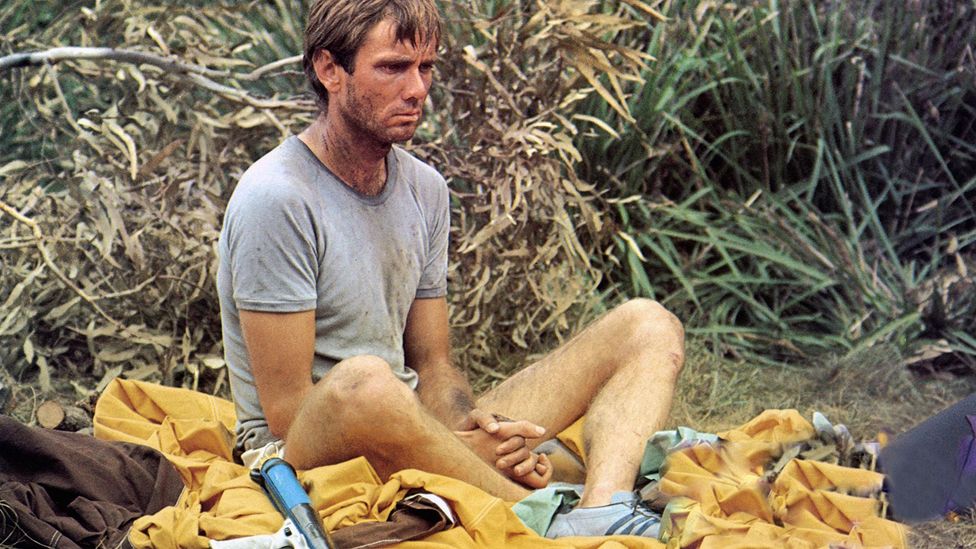
1978’s Long Weekend told the story of a couple under siege from the outback environment (Credit: Alamy)
Di Rosso suggests there are also more practical as well as symbolic reasons why horror filmmakers might be attracted to the outback as a location – ready-made spectacular scenery, for one.
“As a backdrop, it’s such a vivid one,” he says. “The horizon line expresses such a sense of expanse, it’s very evocative, and it doesn’t require much to capture it. But it’s also a fairly unique landscape, and abroad this makes an impression, especially in parts of the world which are colder, or more mountainous and densely populated.
“By using the outback as a location, and by calling on the myths and archetypes that are by now quite strongly associated with it, a film has the benefit of a cinematic tradition behind it that almost guarantees, if not an audience, a certain market recognition and cultural aura. Whether the film is any good is another thing, but it’s a strong base from which to depart.”
On the practical side of things as well, Dillaman suggests that filmmakers have a bit more freedom and control out in the country than in the city: “Cheap [location costs] are manna from heaven for filmmakers, as are isolated locations where you can make a lot of noise or do wildly inappropriate things.”
But does an outback location have the same effect on locals as it does on international viewers? Seventy-two per cent of Australians live in cities hugging the coastline and, while many travel within Australia, is the outback as alien to them as it is to non-Australians?
A history of violence
For Di Rosso it can go both ways – he points to how it can be seen as a locale that’s both threatening and inspiring. “It’s sometimes depicted as a place that allows people to express an individuality that might be repressed in the regimented space of the city,” he says, pointing to films including hit fish-out-of-water comedy Crocodile Dundee (1986). “It’s a common fantasy, about leaving behind the strictures of city life and being your more authentic self.
“But in a sizable number of Australian movies, the outback is imbued with a sense of murderous violence,” he continues. “You see this in a lot of movies and television dealing with indigenous characters, by filmmakers like Ivan Sen or Warwick Thornton, where colonial violence is both historical and ongoing, and takes a myriad of forms.”
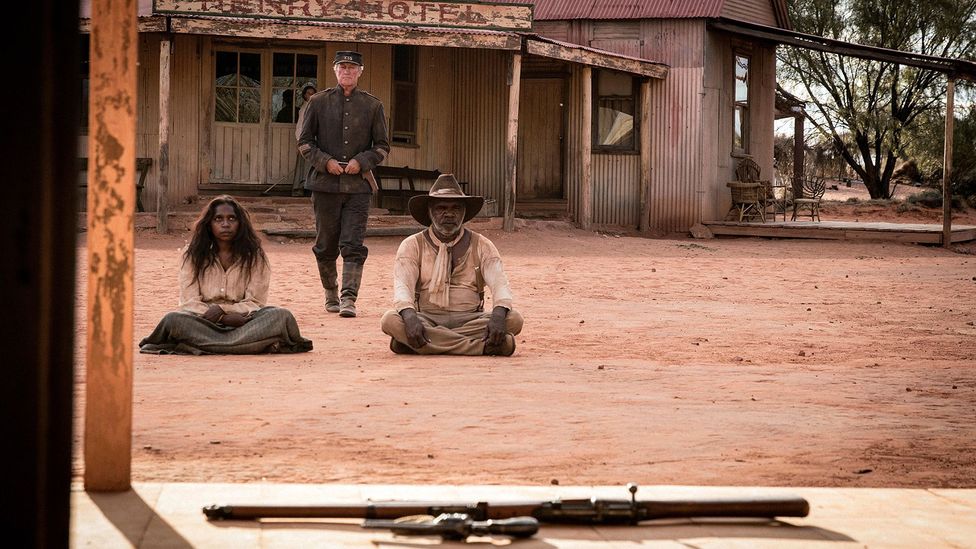
Sweet Country (2017) is among the outback films that have dealt with the violence inflicted on Australia’s indigenous people (Credit: Alamy)
Thornton won the 2009 Camera d’Or at Cannes for his social realist drama Samson + Delilah, about two indigenous teenagers on the run, and his 1920s-set historical thriller Sweet Country (2017) is based on the true story of an Aboriginal man driven to kill an abusive white settler. Sen is best known now for the Mystery Road neo-Western crime franchise – two feature films and three seasons of television – which again has centred indigenous Australians.
For Sen and Thornton’s Aboriginal characters, the horror of the outback doesn’t lie in the landscape or the distance, the remoteness or the harshness. It’s in the existence of colonial Australia in the first place, and the resulting alienation, dispossession and displacement.
The Royal Hotel is out now in the US and will be released on 3 November in the UK.
If you liked this story, sign up for the weekly bbc.com features newsletter, called The Essential List. A handpicked selection of stories from BBC Future, Culture, Worklife and Travel, delivered to your inbox every Friday.
If you would like to comment on this story or anything else you have seen on BBC Culture, head over to our Facebook page or message us on Twitter.








